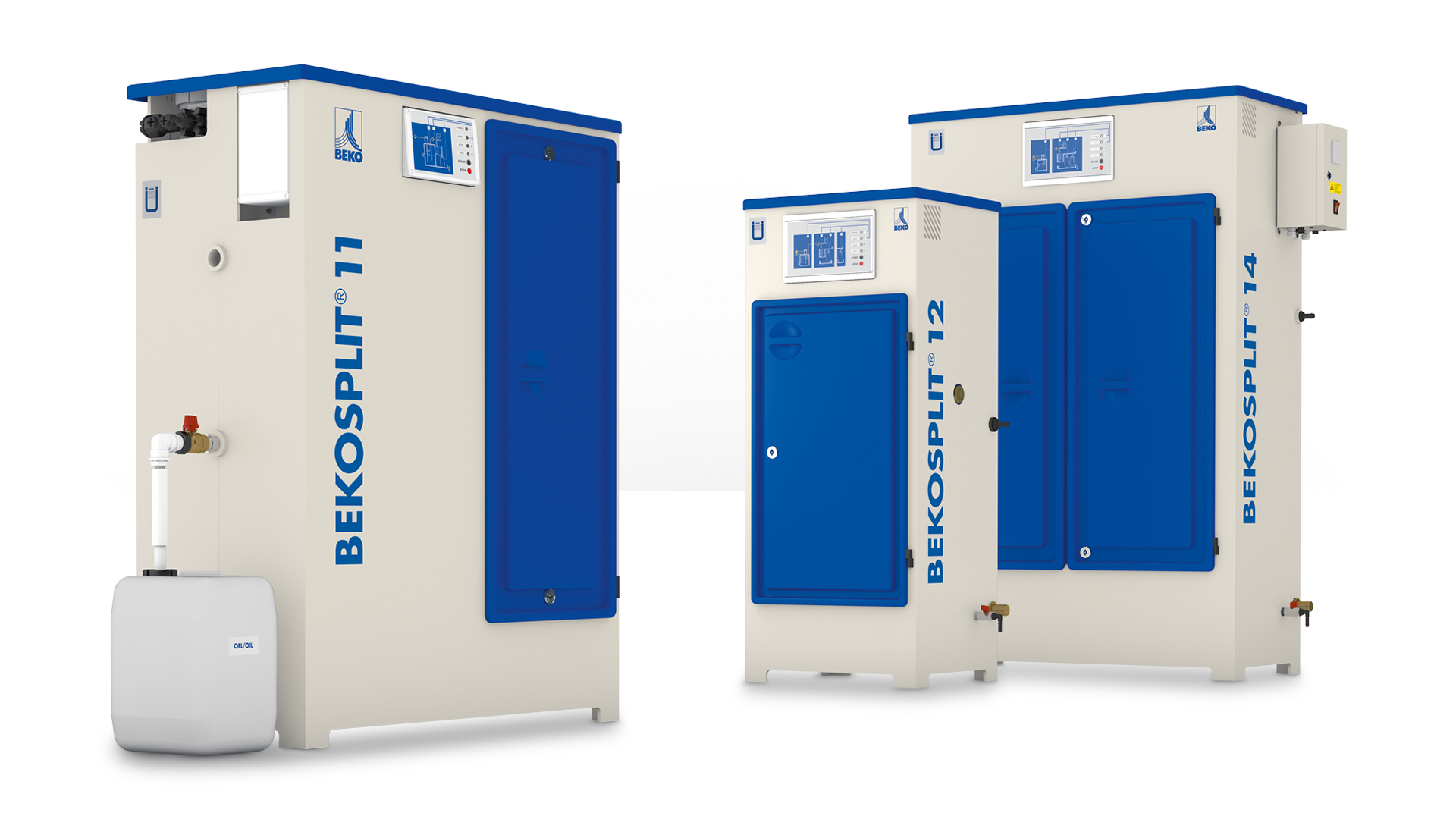As a condensate specialist, BEKO TECHNOLOGIES offers a wide range of solutions, not only to drain off the condensate correctly, but also to treat it in such a way that the water content can be discharged into the wastewater without hesitation. We talked to one of the responsible product managers, Margareth Klein.
The right treatment for every condensate
BEKO TECHNOLGIES Magazine: What is so special about condensates?
M. Klein: Oil/water mixtures as condensates from air compressors exist in different forms. It is always water containing oil in disperse or emulsified form. Most disperse condensates separate after a certain time by gravity separation and then by adsorption/filtration. In this case, an oil/water separator ÖWAMAT is usually sufficient. Emulsions, on the other hand, are stable over time, and require an emulsifier to render the compound ineffective. In this case, treatment by a BEKOSPLIT emulsion splitting unit is necessary.
BEKO TECHNOLGIES Magazine: And how do you know beforehand what kind of preparation is needed?
M. Klein: Often there are already empirical values in the company, to identify what type of condensate it is. But due to various factors, such as a change in the type of oil or changes in the intake air, there can be changes over time. To be absolutely sure, we recommend taking a condensate sample and having it analyzed at our lab. We offer a mineral oil hydrocarbon analysis according to DIN EN ISO 9372-2. Here, the content of mineral oil hydrocarbons is determined by determining the KW index. It is expressed in mg/l and denotes the sum of the hydrocarbons that can be determined by chromatography. We can inform you whether a pure gravity separation by an ÖWAMAT or rather a BEKOSPLIT would be necessary for emulsion separation.

BEKO TECHNOLGIES Magazine: Now we know the different condensates and the suitable devices. But how do they differ?
M. Klein: It is particularly easy to find the right solution using our design tool. For disperse oil-containing condensates from compressed air systems, where the oil components rise to the surface due to the difference in density to the water, you take our ÖWAMAT in the appropriate size. This depends on the amount of condensate produced, i.e. the compressor capacity, the climate zone and the type of oil. The waste water can then be discharged into the sewage system without hesitation. This has been tested and certified by the DIBt (German Institute for Building Technology) with the general building inspection approval.
The condensate is first separated by gravity and then reliably freed from the remaining and finest oil particles via two filtration stages. Here, the tank volume and the resulting residence time also play a significant role.

In the case of stable emulsions, we require a special reaction release agent that ensures separation into wastewater that can be discharged and other components. This takes place in precisely metered quantities in our BEKOSPLIT splitting plant.

BEKO TECHNOLGIES Magazine: And what other expert advice can you give our audience?
M. Klein: Right now, in spring is a perfect time to take a closer look at the condition of the existing condensate treatment. At the latest when there are the first warm or even muggy days from May and June, the amount of condensate also increases by leaps and bounds. Then it's a good feeling to know that the system has been properly maintained, still fits the compressed air system that may have been expanded in the meantime, and also has sufficient capacity reserves for those warm days. And if there may have been production restrictions in recent months, a check makes particularly good sense before things really get going again now. BEKO TECHNOLOGIES' specialist dealers and our service department can take care of this in a qualified manner, ensuring that all environmental aspects are safely complied with.
BEKO TECHNOLGIES Magazine: Thank you very much Ms. Klein for your time!